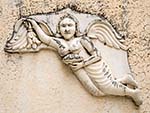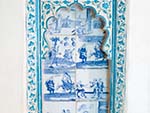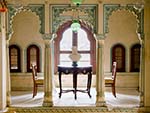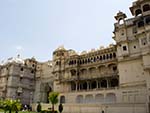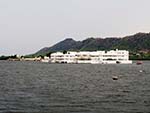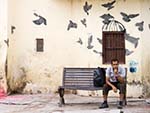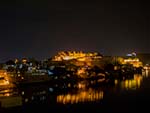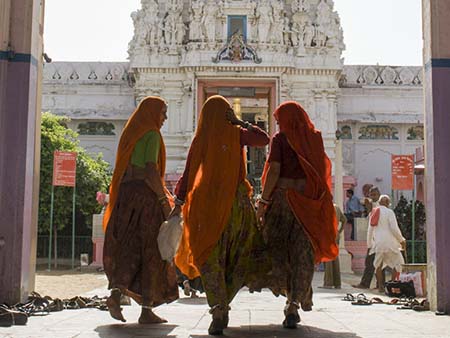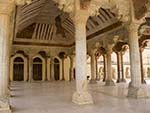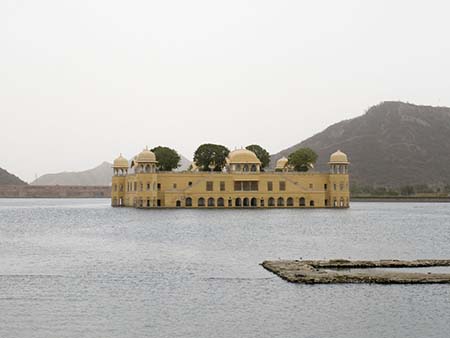Sonya recommended we see this as she had seen similar last time she was Udaipur. The tickets were fairly inexpensive at one-hundred rupees plus a little extra for use of camera during the performance.
The show features the different music and dance styles found in the state of Rajasthan.
The show starts with an elderly man playing a ravanahatha (a bowed string instrument local to the Rajasthan region) and a veiled women singing.
Next three girls performed the fire dance from the Bikaner region of Rajasthan. The girls would move hypnotically and trance like to the music all while balancing kerosene torches on their heads.
Following on was the impressive Tera Tali dance, in this performance a women with thirteen Manjiras (small cymbals) all tied around her legs and arms sits on the ground. The women then strike these cymbals with other manjiras on string, it was a very visual performance.
Veiled women dances followed next for a traditional Rajasthani dance known as Ghoomar. The women gracefully danced and twirled to the traditional folk music.
Next was a comical puppet show, featuring a dancing princess, a rider and horse and a magician who could separate his head all in time to the puppeteer’s mouth whistle.
The final act was the infamous balancing pot lady. The Bhavai Dance originated from the balancing skills of the women who carried pots of water on their heads for long distances. In this dance the woman balanced a staggering ten pots on her head (though the last three were all pre-glued together).































































































































